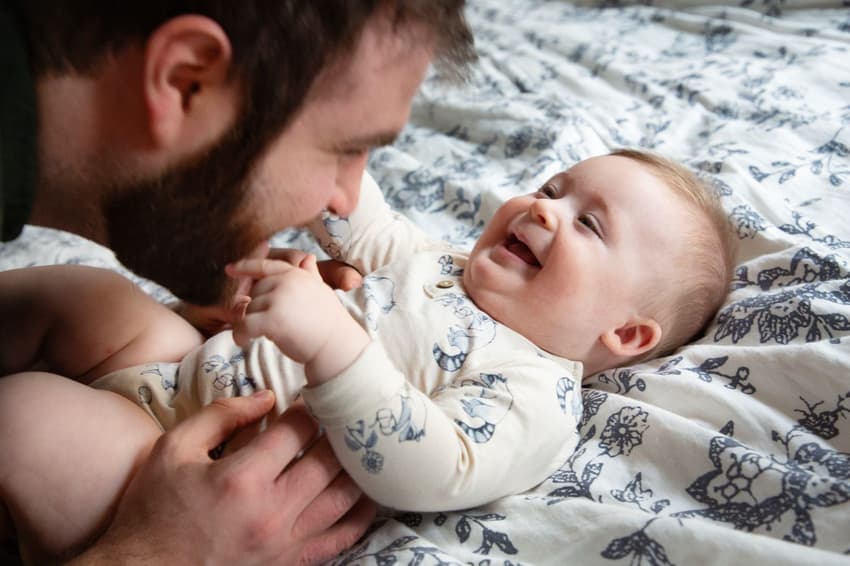Sweden's birth rate hits lowest point in over 50 years

The birth rate in Sweden continues to drop, new figures reveal, with the number of children born per woman lower than it has been since records began in 1970.
Between January and September this year, just under 77,300 children were born in Sweden.
"The most recent year where fewer children were born in the first nine months of the year than this year was in 2003, where almost 76,500 children were born between January and September," population statistician Lovisa Sköld from Statistics Sweden, which is behind the new figures, wrote in a statement.
"But back then, Sweden's population was almost 1.6 million lower."
Compared with the same period last year, the number of babies born decreased by 5.3 percent in 2023.
"But we could already see the birth rate decreasing in 2022," Sköld added. "If we compare January-September 2023 with the average figure during the same period over the last ten years, the number of children born has decreased this year by over 12 percent."
When the birth rate is calculated in relation to the size of the population, the downward trend is even more obvious, Statistics Sweden demographer Vitor Miranda explained.
"During the first three quarters of the year, the birth rate stood at 1.5 children per woman, according to a figure known as total fertility rate. At no point since this statistic was first recorded in 1970 has it been lower in the first three months of the year."
The total fertility rate is calculated based on the population's demographics, comparing the number of children born to the number of women of childbearing age. It varies each year as it is calculated based on the number of children who are born that specific year, therefore giving a good overview of developments in the population over time.
Before this year, the lowest fertility rate recorded in Sweden for the first nine months of a was in 1999, when it hit a historic low of 1.56 children per woman," Miranda explained.
The fertility rate has historically varied over time, and is affected by the economy, the level of education and the employment rate, as well as other societal factors like political changes which affect families.
"The research has not produced a definitive answer as to why we're seeing this kind of decline at the moment," Miranda said. "But historically, a decline is usually followed by an increase. However, it's hard to predict when that will be."
Comments
See Also
Between January and September this year, just under 77,300 children were born in Sweden.
"The most recent year where fewer children were born in the first nine months of the year than this year was in 2003, where almost 76,500 children were born between January and September," population statistician Lovisa Sköld from Statistics Sweden, which is behind the new figures, wrote in a statement.
"But back then, Sweden's population was almost 1.6 million lower."
Compared with the same period last year, the number of babies born decreased by 5.3 percent in 2023.
"But we could already see the birth rate decreasing in 2022," Sköld added. "If we compare January-September 2023 with the average figure during the same period over the last ten years, the number of children born has decreased this year by over 12 percent."
When the birth rate is calculated in relation to the size of the population, the downward trend is even more obvious, Statistics Sweden demographer Vitor Miranda explained.
"During the first three quarters of the year, the birth rate stood at 1.5 children per woman, according to a figure known as total fertility rate. At no point since this statistic was first recorded in 1970 has it been lower in the first three months of the year."
The total fertility rate is calculated based on the population's demographics, comparing the number of children born to the number of women of childbearing age. It varies each year as it is calculated based on the number of children who are born that specific year, therefore giving a good overview of developments in the population over time.
Before this year, the lowest fertility rate recorded in Sweden for the first nine months of a was in 1999, when it hit a historic low of 1.56 children per woman," Miranda explained.
The fertility rate has historically varied over time, and is affected by the economy, the level of education and the employment rate, as well as other societal factors like political changes which affect families.
"The research has not produced a definitive answer as to why we're seeing this kind of decline at the moment," Miranda said. "But historically, a decline is usually followed by an increase. However, it's hard to predict when that will be."
Join the conversation in our comments section below. Share your own views and experience and if you have a question or suggestion for our journalists then email us at [email protected].
Please keep comments civil, constructive and on topic – and make sure to read our terms of use before getting involved.
Please log in here to leave a comment.